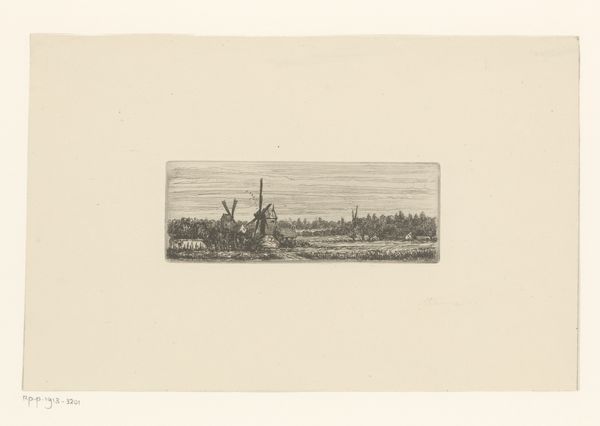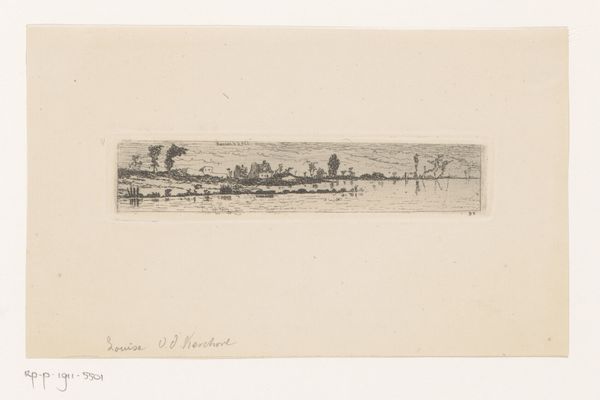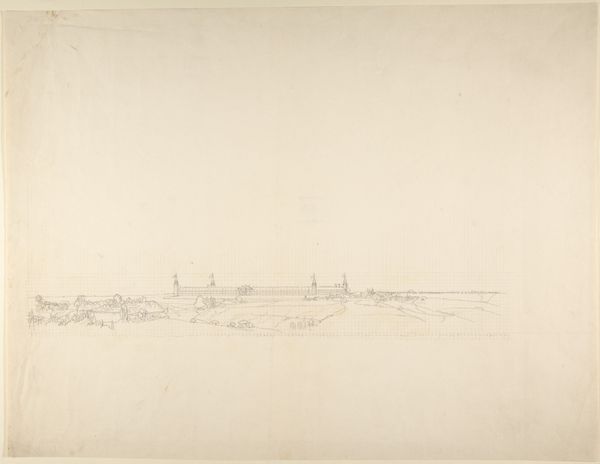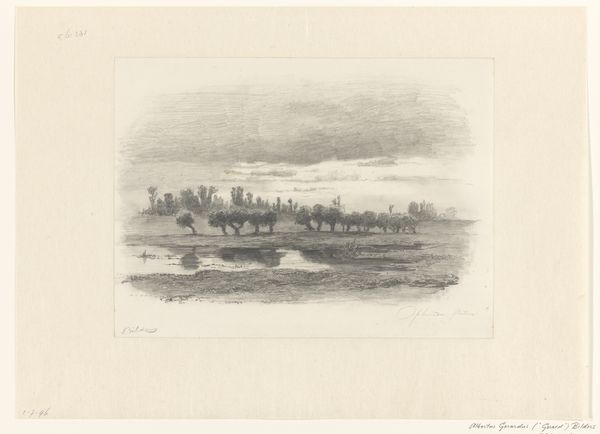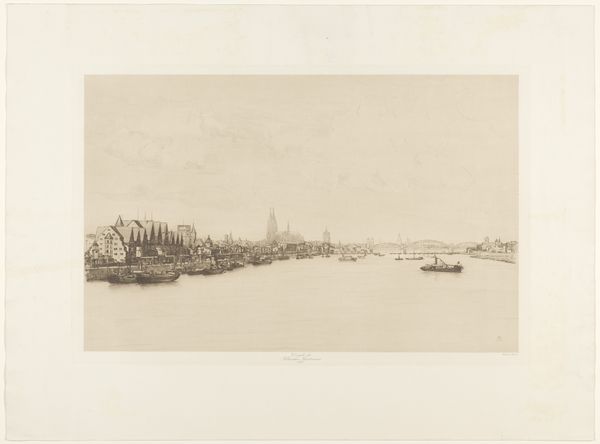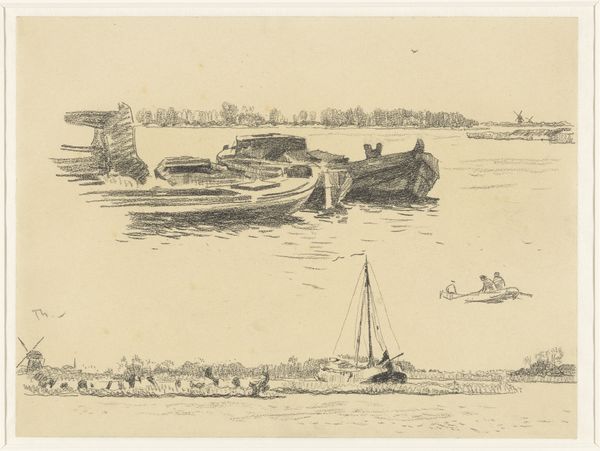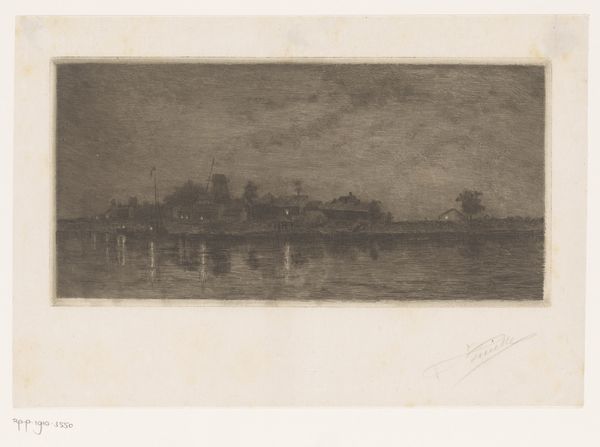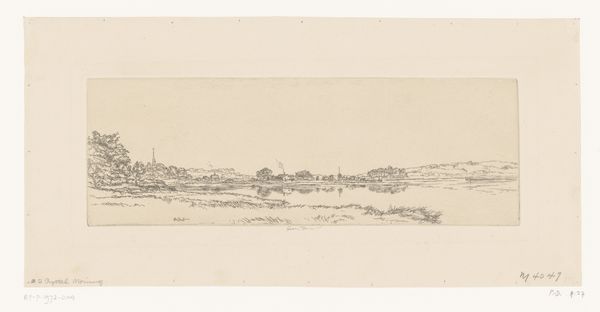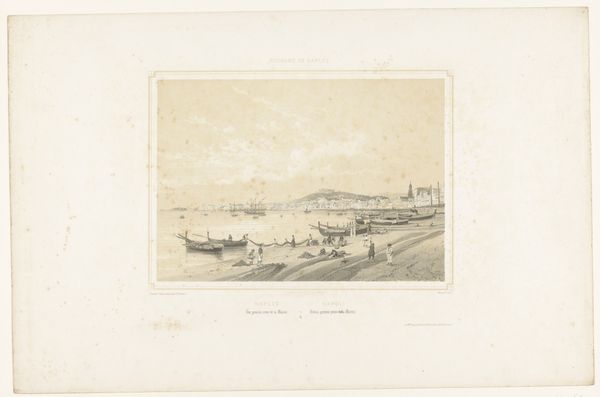
drawing, paper, ink
#
drawing
#
dutch-golden-age
#
landscape
#
river
#
paper
#
ink
#
cityscape
#
genre-painting
Dimensions: height 145 mm, width 408 mm
Copyright: Rijks Museum: Open Domain
Editor: This drawing, titled "Gezicht op het dorp Uithoorn," possibly from 1643 by Valentijn Klotz, rendered in ink on paper, feels incredibly serene. The scene of a Dutch village reflected in the water, it's very idyllic. What can you tell me about this artwork and the cultural moment it comes from? Curator: What strikes me most is how this seemingly simple landscape served the Dutch Republic’s self-fashioning. The Golden Age saw a surge in paintings—and drawings—that celebrated the industriousness and placid beauty of the Dutch countryside and its towns. Ask yourself, who were the primary consumers of this type of art? Editor: I guess the rising merchant class? They would want to display images that mirrored their own success and the world they were shaping. Curator: Exactly. These weren't aristocratic portraits or religious scenes destined for churches. These images, and drawings like this one of Uithoorn, are statements of civic pride and affirmations of a newly wealthy society’s values: hard work, order, and the careful cultivation of their environment. Notice how the artist meticulously depicts both the architecture and the windmills that powered the local economy? Editor: It’s like they’re saying, "We built this." But the village also looks so…small against the landscape. Curator: And that brings in another aspect of the cultural context. These landscapes also implicitly address the ever-present threat of the water. This meticulous depiction almost tames this vulnerability through art. Can we consider that a subtle assertion of control over their environment, very symbolic of the Dutch ingenuity? Editor: I never thought of it that way! I was just drawn in by the calm of the river, but you’re right; it's loaded with meaning about Dutch identity and societal aspirations. Curator: The public function of art in crafting social values during this period, isn’t that intriguing?
Comments
No comments
Be the first to comment and join the conversation on the ultimate creative platform.

